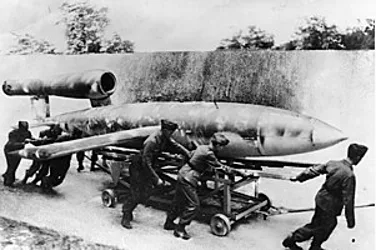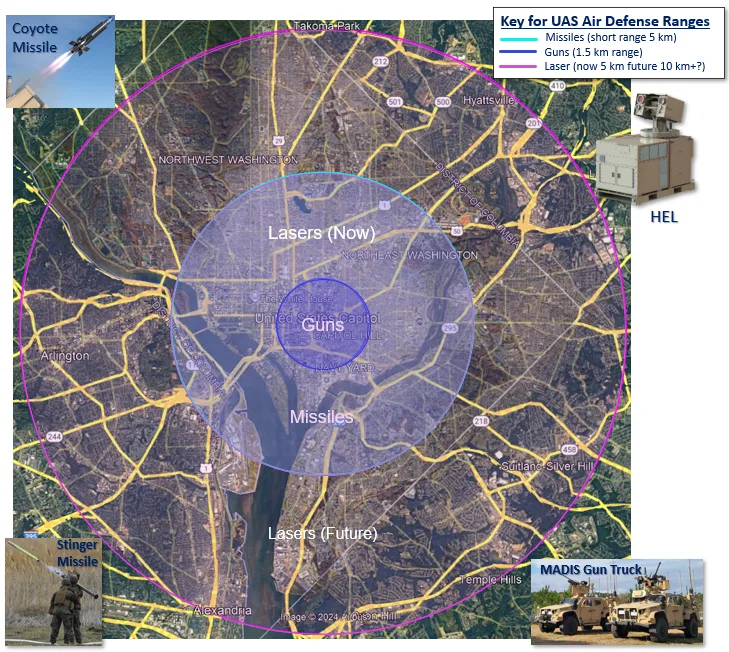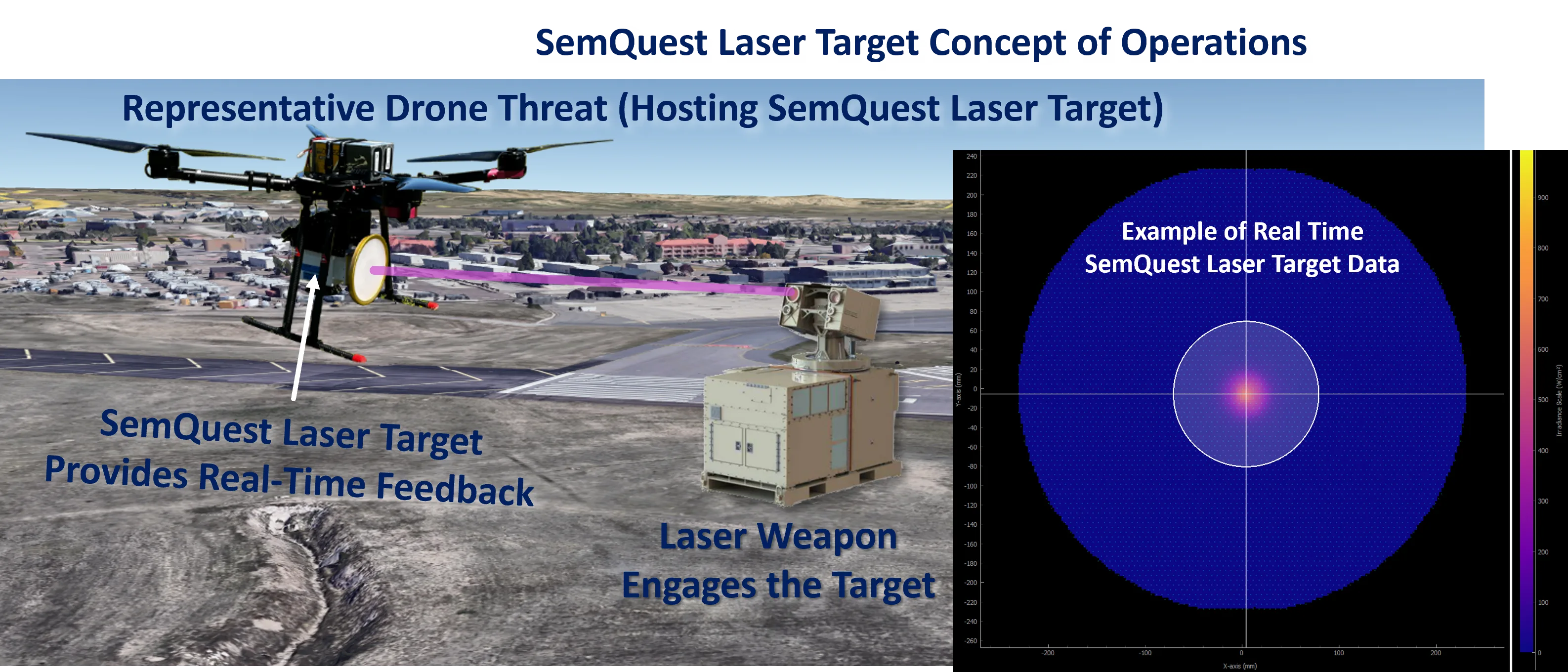How’s Your High Energy Laser Doing?
SemQuest – High Energy Laser Diagnostics Made Easy
By Caleb Hoover
Add Some Rigor to Your High Energy Laser System Test with Reusable Targets
How’s your High Energy Laser (HEL) doing? Is it able to neutralize drone threats out to 10 kilometers? How many shots can it take before one of its components overheats?
According to an article in Forbes Russian drone strikes spiked in September 2024 with over 1,300 Shahed long-range drones reported. Many of these attacks are successfully targeting Ukraine’s power infrastructure.
The Old Made New
These drone strikes can come from thousands of miles away which compared to the V-1 Buzz bombs of World War II make these drones a longer-range threat than this infamous terror weapon of the past.
In World War II, the means of dispatching the V-1 threat consisted of anti-aircraft guns, barrage balloons, and even fighter aircraft intercepting the bombs before they reached their target.
Today, various attack drones are being dispatched with similar technical means, including First-Person View (FPV) drones, which serve the role that manned fighter aircraft served in World War II. Yet some new techniques are in use today, including missiles, High-Power Microwaves (HPM), and even High-Energy Lasers (HEL).


Challenges With Using Lasers to Defeat Drones
HEL systems hold promise as devices with:
- Deep Magazines – They just need electrical power to fire
- Fast Engagement – HEL energy moves at light speed
- Silent Engagement – HELs don’t make sound
But lasers also face challenges right now:
1. Limited engagement range
Lasers can be limited to ranges of 1-5 km
2. Able to be counter-measured by smoke & particles
Laser beam strength can attenuate and lose strength when particulates and smoke are in the intended beam path.
3. Can be prone to overheating after multiple shots
Laser weapons achieve destructive effects on target by doing laser welding “badly” so that the target surface ablates and becomes destroyed. Although current lasers can take out threats at a lower cost than missiles or guns, the current range of lasers is slowing their adoption by military planners. Instead, military planners are choosing to opt for using the existing methods as the established (albeit more expensive) means that works.
For a point of comparison, the capabilities and limitations of other current defenses are shown below with effective engagement rings depicting when threats can be engaged with these defense assets.

If you are making a HEL weapon system what are you doing to beat the existing missile and gun system competition?
Just being better than the other HEL system down the block is not good enough! You need to also make your system capable of destroying drones BEFORE they get to short range missile and gun range. That is the only way to ensure the acceptance of your system amongst all the other technology options out there.
We already know that lasers can take out drones effectively, but this seems to be happening mostly at closer engagement ranges. What kind of testing could help HEL system developers improve their systems?
HEL Engagement Range Extension – Highly survivable and reusable targets can provide HEL system developers with the means to fire at a point in space that is a known limit to that system’s maximum effective range. This can allow for both data collection AND systems diagnostics to occur even in the middle of a HEL shot.
HEL System Endurance Testing – Sure you can use a beam dump to test out your HEL system’s endurance, but this is really only qualitative at best and will not provide any quantitative information on a HEL system.
Using an instrumented beam dump can allow you to analyze your HEL system performance throughout the shot without destroying your lab.
HEL System Performance Model Validation – Models are a great tool to get an idea of HEL system performance. At some point, the models must be validated with real-world data. How do you validate even a fraction of all a model’s hypothetical engagements?
Wouldn’t it be nice to have the ability to test the model data of your system against real-world shots completed by your HEL system against a representative threat?
It is possible to test your system performance during open-air tests against an instrumented beam dump that can tell you the power and irradiance your HEL system puts down range.
So, how’s your High Energy Laser system doing? We can tell you.

